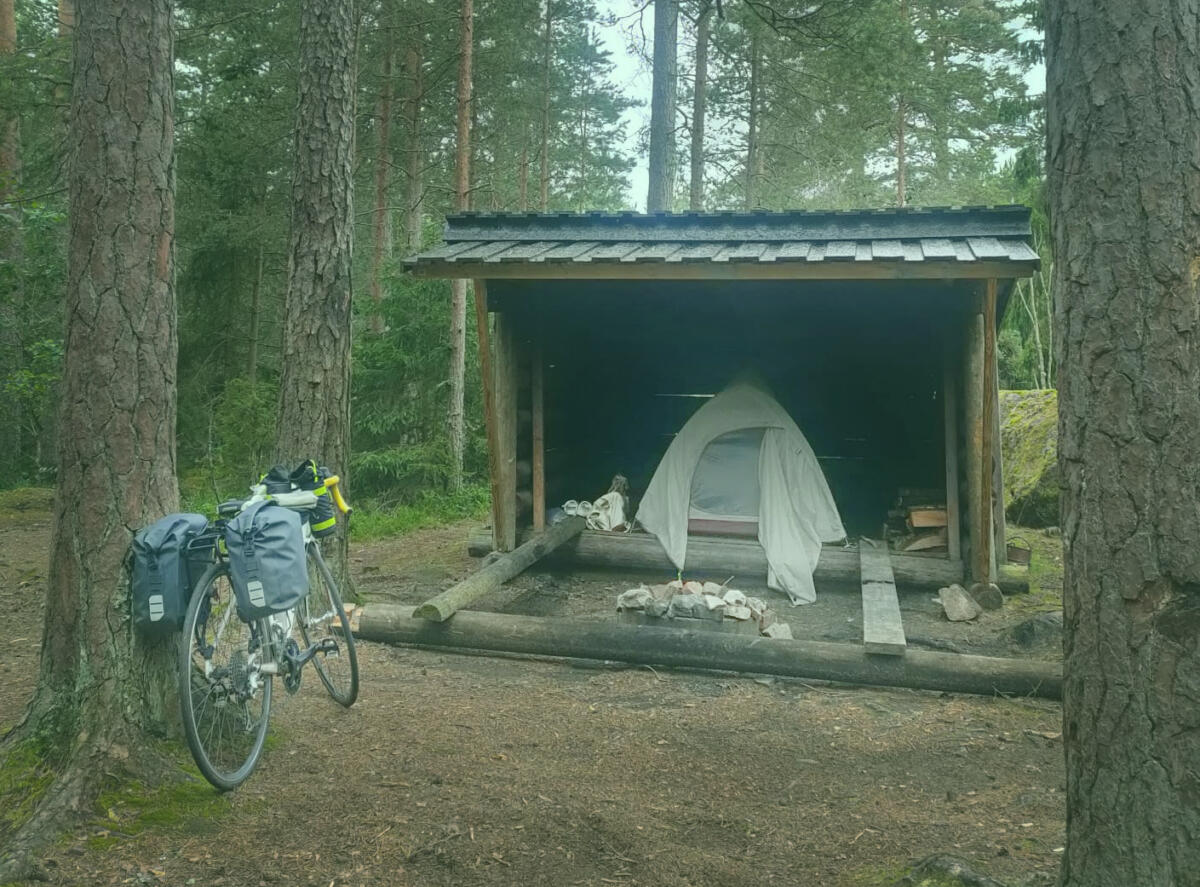Finland Cycling II: Solo Camping and Safety
Camping is a great way to enjoy the beautiful nature in Finland. Student Ambassador Rong shares their insights on how to stay (and feel!) safe in the wild.

Hey everyone, I’m Rong, a third-year student at the Academy of Fine Arts and a student ambassador. I love bikepacking and cycling. In 2018, I went on a cycling trip around Taiwan. During the summer of 2024, I did a solo bikepacking trip from Sweden to the Netherlands. I’ve also taken several weekend camping trips in Finland.
In this blog post, I’d love to share a few tips for solo bikepackers. Finland is a wonderful place for camping and bikepacking. However, one of my main concerns while being on the road alone has been safety. 95 percent of the time, nothing happens, but it’s the possibility of that 5 percent that scares me. I believe most people are kind and have good intentions, but when I, with my small appearance, I can’t help but worry about my safety in the untamed wilderness and forests.
To truly enjoy the beautiful landscapes and nature in Finland, it’s important to address those inner unsettling feelings and thoughts first!
1. Trust your instincts
If you ever find yourself in a situation where you don’t feel completely safe, your instincts will usually guide you in the right direction. I like to spend 1-2 hours just sitting and observing my surroundings. I prefer arriving while it’s still light out so I can get familiar with the area and adjust to the natural noises. This helps me notice if something unusual happens during the night.
2. Make sure no one follows you before pitching your tent
It’s a good idea to turn around a few times before reaching your final camping spot. This small act can help ease the worry of someone potentially following you. It’s better to avoid having that concern lingering in the back of your mind while camping.
3. Try pitching your tent at a laavu instead of wild camping
Most laavus are located in more secluded spots, requiring extra walking to reach them, which means fewer people will pass by compared to random campsites near lakes or by the roadside. People generally visit laavus with specific purposes, like sleeping overnight or barbecuing. If you can’t find a laavu, try to camp deeper in the forest where you’re less likely to be disturbed.
4. Scout multiple camping spots around your destination
Research laavu locations in advance so you have backup options. If one spot doesn’t feel right, you can always move to the next. There are several laavu maps available online, such as laavu.info. If you’re camping in Sweden, many people use the site Vindskyddskartan to locate Vindskydd shelters.
5. Do whatever makes you feel safe, even if it’s holding a knife while you sleep
I always carry a small knife in my bag. Luckily, I’ve never had to use it during my trips, but I do keep it next to me when I sleep. It gives me a sense of security and helps me feel safer while sleeping alone outdoors.
6. Avoid riding at night or setting up camp too late
As I mentioned earlier, it’s important to familiarize yourself with the area to feel safe. When it’s dark, it’s harder to see, and unfamiliar sounds can be unnerving. Arriving at your campsite earlier allows you to become comfortable with the environment, which makes for a more peaceful night.
In conclusion:
The biggest source of fear is often our desire for absolute safety, which is hard to guarantee during solo bikepacking. Anything can happen, but more often than not, it’s our own minds that create fear. If you can calm those thoughts, your camping experience will be much more enjoyable than you expect. Of course, the tips in this blog can also help prevent the worst from happening!
Life of an art student
In this blog, Uniarts Helsinki students share their experiences as art students from different academies and perspectives, in their own words. If you want to learn even more regarding studying and student life in Uniarts and Helsinki, you can ask directly from our student ambassadors.
Latest posts
Follow blog